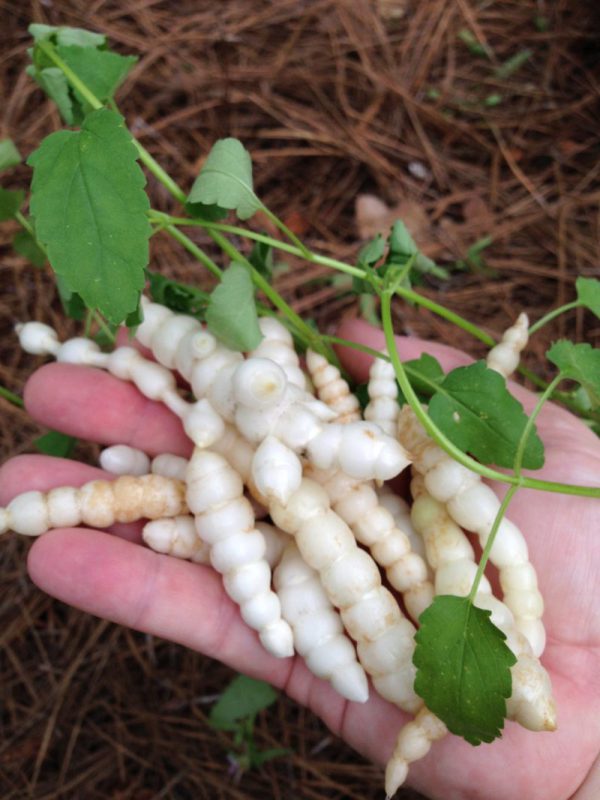Summer’s End
John Prine wrote, “Summer’s end is around the bend just flying. The swimming suits are on the line just drying.” His poignant song serves as a valuable summative theme for concluding our summer gardening series, “In the Garden, We Grow”. August 10th concludes the summertime. Students are returning to Nassau County Schools, school buses fill the streets, and soon the nostalgic sounds of fall begin.
Earlier blog posts explored the basics of vegetable gardening. Throughout the blog series, topics included building gardens, the importance of garden soil, cole crops, summer vegetable gardening activities, and organic vegetable gardening. Lastly, to round out our gardening program, I want to highlight the summer’s end with the wild, wicked, wonderful, and welcoming.
The Wild, Wicked, Wonderful, and Welcoming
There is an extensive list of unique fruits and vegetables we can grow in our gardens. Throughout the series, we highlighted many of the most common fruits and vegetables. In Florida, we also have the ability to grow tropical fruits from around the world! Uniquely, many of our Native plants, which are growing naturally all over the county can be grown in your gardens for their wonderful bounty of fruit. They are wild, wicked, and wonderful.
The Wild
The wild plants we can cultivate and easily grow are common edible plants that naturally thrive throughout our natural areas. Beautyberry (Callicarpa americana) thrives in our natural areas, provides food for wildlife, and has a beautiful ornamental quality. Its berries pop with purple color but are used for jams and jellies – although it needs lots of sugar. Florida Betony (Stachys floridana), or Rattlesnake Weed, is commonly considered a landscape weed. Despite its name, this native perennial is commonly harvested for its underground tuber that tastes like artichokes. Many people may put it in their salads to add a little crunch.

The Wicked
Wicked plants, to me, commonly receive the moniker of “nuisance,” “pest,” or “invasive.” These native plants may seem problematic but important components of our ecosystem. They also provide a unique edible value to our garden. They include Passionflower (Passiflora incarnata), Muscadine Grape (Vitex rotundifolia), and, believe it or not, Smilax (Smilax spp.). The Passionflower produces sweet, yet small fruits that many eat raw or put into jams, syrups, and drinks. Our native Muscadine Grape is delicious but requires lots of space to grow. We recommend a self-fertilize variety like the ‘Carlos’ or ‘Florida Fry’. Smilax, or Green Briar, is the most unique. The succulent new growth tastes like asparagus and some species of Smilax help make sarsaparilla.
The Wonderful
The wonderful plants include Beautyberry (Callicarpa americana), Blueberry (Vaccinium spp.), Florida Betony (Stachys floridana), and Persimmon (Diospyros virginiana). Of course, this is only a handful of the many edible plants we can grow in our garden. Our native Persimmon is very tasty and provides ornamental quality to the landscape. The fruit is not marketable because it does not ship well., but is very tasty. You can use Japanese Persimmons, too, but I recommend a nonastringent cultivar like the Fuyu or Jiro. Blueberries are native to Florida – did you know that? Consider adding our native blueberry or any rabbit-eye varieties to your garden.
The Welcoming
Lastly, gardens are welcoming. They welcome everyone in our community and provide healing. I have discussed the power of gardening in the past, but all gardens provide a welcoming spirit for all who enter. Formally, therapeutic gardening has affected thousands of individuals throughout the world as part of their individual healing. Luckily, we get those same benefits in our own gardens, especially if we welcome all who enter.
In the Garden, We Grow
Despite the summer’s end, our gardens await. The waning summer heat brings about a moment to fill our gardens with fruits and vegetables, but more importantly, it gives us the opportunity to enjoy our gardens with family, friends, neighbors, and the community. In the garden we grow food but, in the garden, we grow a community.
More Blogs
UF/IFAS Extension Nassau County, Taylor Clem, Blog Page
Other Resources
Florida Vegetable Gardening Guide
Nassau County Extension YouTube Channel
 1
1
